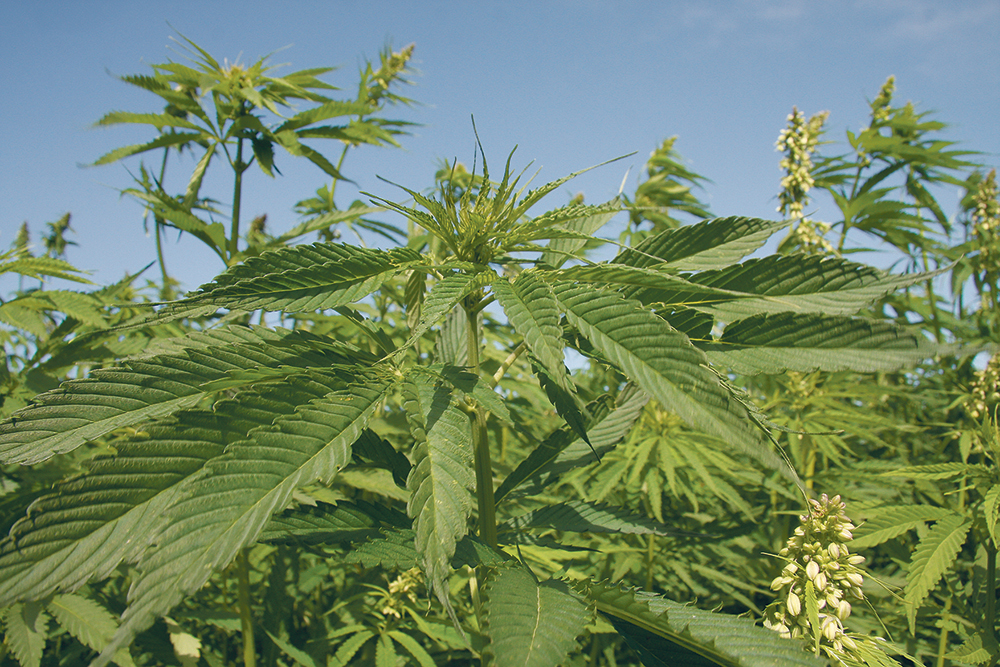Western Canada is the country’s most important hemp production region, accounting for 60 percent of Canada’s 1,100 cultivation licences as of 2020, according to Health Canada.
But while there are more products on store shelves, more cultivars than ever before and high prices for the crop, demand for hemp has been mixed.
“I think the hemp industry is struggling,” said Calgary-based hemp consultant Russ Crawford.
Crawford, a former president of the Canadian Hemp Trade Alliance, added that while hemp is a viable and profitable crop compatible with Canadian agriculture, he thinks it has a stigma attached as regulations by Health Canada have steered away prospective growers.
Read Also

Volatile temperatures expected for this winter
DTN is forecasting a lot of temperature variability in the Canadian Prairies this winter. Precipitation should be close to average.
“There are some challenges, not the least of which its affiliation with cannabis,” he said. “It is still overseen by Health Canada and on that basis, there’s a certain amount of requirements for farmers and processors to be registered and licensed and checked and double-checked by Health Canada…. Hemp is still struggling with reaching its full potential.”
Other high-priced crops and a relative lack of investment in market development were also cited by Crawford as challenges. Nevertheless, he anticipates a small increase in acres in Western Canada.
“It’s not going to be a huge jump, but it will be a modest increase,” he said.
Meanwhile, Manitoba hemp consultant Anndrea Hermann called the hemp industry in Western Canada “growing and prosperous”, citing increased use as feed.
“We’ve seen a constant gain in the grain side. We have further gains in feed production with having more varieties listed now than ever,” she said, also citing the presence of new fibre processing facilities.
Hermann added that this year’s hemp harvest is critical as supply from previous years is tightening.
“We need more acres this year because what we’ve seen this year is all the organic grain that was grown in 2021 has already been spoken for and/or mostly processed by now,” she said. “It’s not like some years ago when we had such a huge glut (of conventional grain) that we can peel away at that glut for two years.”
As international markets open to hemp, there will be demand for Canada’s crop, according to Hermann.
“Especially on the food side, Canada has really mastered a lot of the standard production and quality parameters that we’re not quite seeing yet out of the (United States),” she said, adding that there is budding demand for building materials made of hemp.
“Once we have these manufacturing facilities that can transform this stock fibre, that’s going to increase the demand because we’re going to have more product and we’re going to have that product here in North America versus having to import that product from our colleagues in Europe,” Hermann added.
Clarence Shwaluk, director of farm operations for Manitoba Harvest Hemp Foods, said his company worked with 80 growers across the Prairies for last year’s harvest and currently has 60 under contract. The company also showcased its new products at the Natural Products Expo West in Anaheim, Calif., last March.
“We introduced a number of new products (there). We’ll be doing some exclusive work with Whole Foods Market based in the U.S. for 90 days and then we’ll expand those products into additional markets,” Shwaluk said. “Those products are more in line with using hemp as a baking ingredient or in smoothies. (They’re) an additional play on our protein product lines.”
Manitoba Harvest has also been collaborating on a project with Protein Industries Canada since last year, developing new pea and hemp varieties for use in food and ingredient processing with aims to increase protein content while improving starch content and texture.
Overall, Shwaluk seems optimistic about hemp’s standing in the markets.
“I think hemp is positioned well for the protein markets and hemp has some really good attributes as far as the nutritional side of things,” Shwaluk said. “We had a couple of good production years, but we’re going to be a little bit down on acres this year.”
















